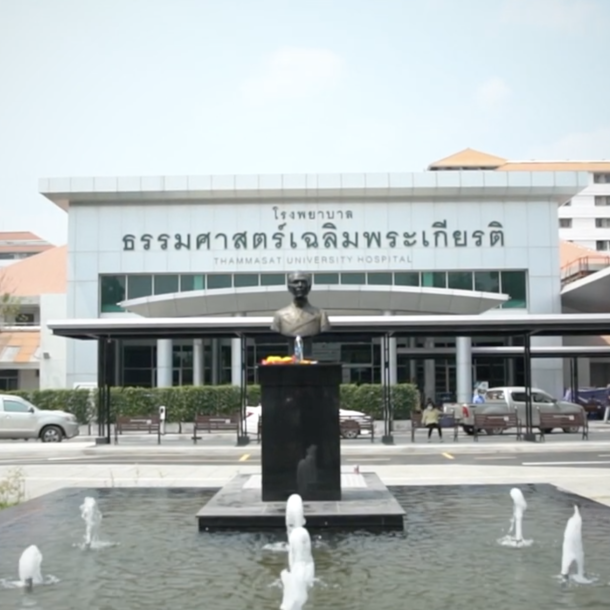
Kamikatsu Zero Waste Town หมู่บ้านแห่งนี้ ต้องการที่จะเป็นหมู่บ้านที่ปราศจากขยะ แต่การจะบรรลุเป้าหมายนี้ได้ มันไม่ง่ายเลย เพราะเรื่องการบริหารจัดการขยะนั้น เพียงแค่คนกลุ่มเล็กไม่กี่คน คงทำไม่สำเร็จได้อย่างแน่นอน
Kamikatsu เป็นหมู่บ้านเล็กๆทางตะวันตกเฉียงใต้ของประเทศญี่ปุ่น หมู่บ้านนี้มีพื้นที่ราบเล็กน้อย และมีภูเขาที่เป็นป่าประมาณ 85% ของพื้นที่ทั้งหมด มีประชากรทั้งหมดประมาณ 1,580 คน อยู่กัน 800 ครัวเรือน แยกย้ายกันอยู่ใน 55 ชุมชน โดยแต่ละชุมชนอาศัยอยู่กระจายตัวตามภูมิประเทศที่ระดับความสูงตั้งแต่ 100 ถึง 800 เมตร
“ผลกระทบต่อธรรมชาติที่วนกลับมากระทบต่อตัวคนทำเสียเอง”
เมื่อก่อนเมืองนี้ก็เคยเป็นเมืองที่เผาขยะกันเป็นเรื่องปกติ ก่อนที่พวกเขาจะตระหนักได้ว่าการเผาขยะของพวกเขามันส่งผลกระทบต่อสิ่งแวดล้อมรุนแรงเพียงใด ซึ่งเตาเผาที่พวกเขาใช้เผาขยะนั่นเองที่เป็นตัวการในการปล่อยก๊าซเรือนกระจกและมลพิษจำนวนมากและเป็นตัวการในการทำลายแหล่งอาหารในธรรมชาติของพวกเขา สิ่งที่พวกเขากระทำต่อธรรมชาติมันวนกลับมาส่งผลกระทบถึงพวกเขาในท้ายที่สุด และนี่เอง จึงเป็นจุดเริ่มต้นของความตระหนักที่เกิดขึ้นในหมู่บ้านแห่งนี้
“เมื่อประเทศญี่ปุ่นกำลังจมอยู่ในกองขยะ”
ย้อนกลับไปในอดีต ญี่ปุ่นเป็นประเทศที่มุ่งดำเนินการสนับสนุนการรีไซเคิลมาตลอด ในอดีตญี่ปุ่นมีเปอร์เซ็นต์ของขยะที่นำมารีไซเคิลมากกว่าในปัจจุบันด้วยซ้ำ จนกระทั่งในปี 1950 ความเฟื่องฟูเข้ามาหลังจากสงครามจบลง โรงงานเร่งผลิตสินค้าเพื่อขาย และในขณะเดียวกันก็ได้สร้างขยะจำนวนมาก ตามสถานที่แสนศิวิไลในเมืองมีการสร้างขยะจำนวนมาก ส่งผลทำให้ ปริมาณขยะในประเทศญี่ปุ่นเพิ่มขึ้นอย่างก้าวกระโดด ภายใน 20 ปีปริมาณขยะเพิ่มมากขึ้นถึง 5 เท่า จาก 8.9 ล้านตันในปี 1960 เป็น 43.9 ล้านตันในปี 1980 ซึ่งมากพอๆกับการเติมขยะลงในสนามเบสบอลโตเกียวโดมประมาณ 116 ครั้ง
“การถูกกดดันให้ต้องกำจัดขยะที่ตนเองสร้างเอาไว้”
เทศบาลขนาดใหญ่เล็กทั่วประเทศญี่ปุ่นต้องลงทุนเงินภาษีจำนวนมากเพื่อสร้างเตาเผาขยะ ประเทศญี่ปุ่นต้องถูกกดดันอย่างหนักเพื่อคิดค้นวิธีการจัดการขยะให้ได้ทันต่ออัตราการสร้างขยะที่เพิ่มขึ้นสูงด้วย แต่โชคร้ายที่พวกเขาก็ยังเดินไปผิดทาง ในปี 1980 รัฐบาลยังคงดำเนินการเผาขยะในพื้นที่โล่งต่อไป แต่แล้วความหวังในการคิดค้นหาวิธีการจัดการขยะที่ถูกต้องก็มาถึง ในปี 1990 ความพยายามอย่างจริงจังในเรื่องของการจัดการขยะเริ่มขึ้นในหมู่บ้าน Kamikatsu
“สถานีขยะ Hibigaya สัญลักษณ์ของโครงการขยะเหลือศูนย์ในหมู่บ้าน Kamikatsu ในปัจจุบัน”
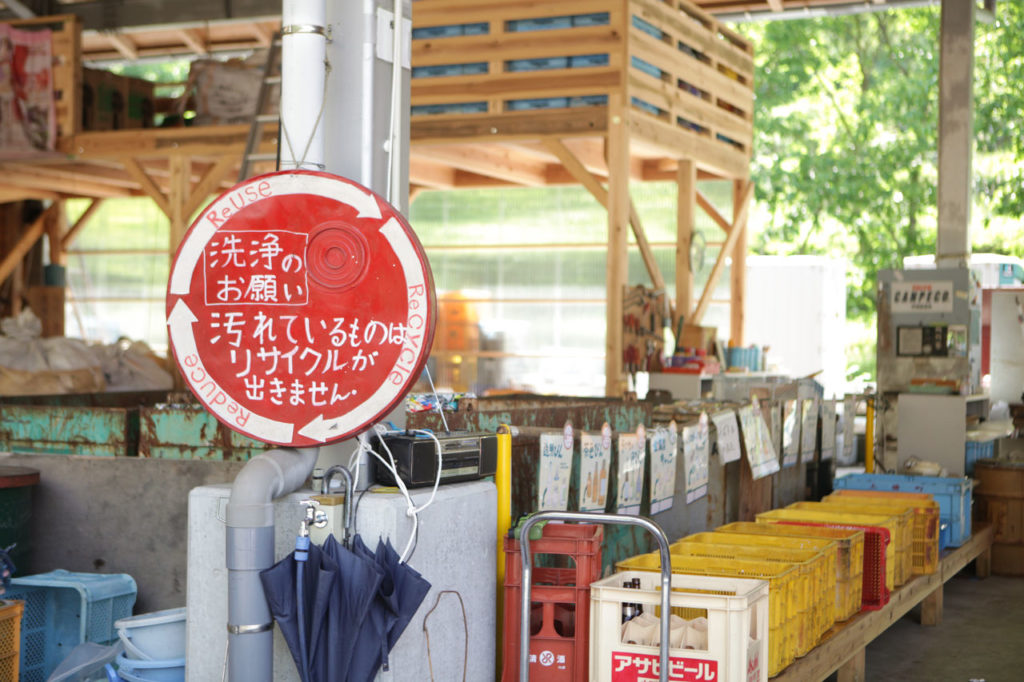
มีการก่อตั้งสถานีขยะ Hibigaya ขึ้นโดยภายในสถานีเก็บขยะจะมีป้ายและอุปกรณ์ตกแต่งที่สร้างขึ้นจากวัสดุไซเคิลทั้งหมด แต่เนื่องจากชุมชนทั้ง 55 แห่งของหมู่บ้าน Kamikatsu กระจัดกระจายไปทั่วบริเวณกว้าง จึงมีค่าใช้จ่ายที่สูงมากที่จะซื้อรถขนขยะเพื่อเดินทางเก็บขยะจากทุกชุมชนในหมู่บ้านแล้วนำไปรวมไว้สถานีขยะ ในปี 1994 รัฐบาลท้องถิ่นจึงได้เริ่มร่างแผนโครงการเมืองรีไซเคิลขึ้น
“ก้าวแรก การทำปุ๋ยหมักจากขยะในครัวเรือน”
จากการศึกษาองค์ประกอบของขยะและปริมาณที่เกิดขึ้นพบว่าขยะมูลฝอยมีปริมาณเยอะที่สุดจากขยะทั้งหมด หากจะนำไปเผาแบบขยะอื่นๆ ก็ต้องพึ่งพาเชื้อเพลิงเสริม เพราะขยะมูลฝอยจากครัวเรือนเป็นขยะที่มีความชื้นสูง ไม่สามารถเผาได้แบบขยะอื่นทั่วไป ทางหมู่บ้านจึงเลือกใช้วิธีที่แตกต่างอย่างการนำขยะในครัวเรือนอย่างเศษอาหารมาทำเป็นปุ๋ยหมัก
“การสนับสนุนที่ช่วยผลักดันให้เกิดความเปลื่ยนแปลงอย่างแท้จริง”
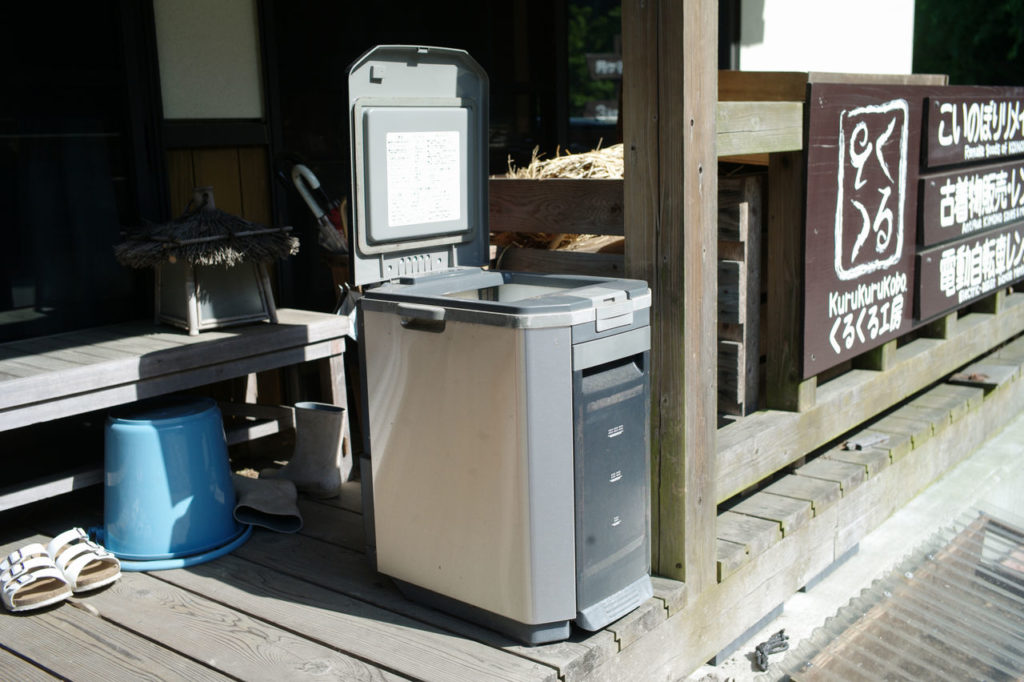
ในปี 1995 หมู่บ้าน Kamikatsu ได้เสนอเงินช่วยเหลือชาวบ้านในการจัดซื้อเครื่องแปรรูปขยะมูลฝอยในครัวเรือน ซึ่งเป็นความคิดริเริ่มบุกเบิกในญี่ปุ่นในขณะนั้น แต่ละครัวเรือนสามารถซื้อเครื่องแปรรูปขยะมูลฝอยดังกล่าวได้หนึ่งเครื่องในราคาพิเศษเพียง 10,000 เยนเท่านั้น ซึ่งมีอัตราการนำมาใช้สูงถึง 97% ซึ่งหมายความว่าพวกเขาสามารถกำจัดขยะดิบ (เช่น กลุ่มขยะที่เกิดจากเศษอาหารจากครัวเรือนที่สามารถนำมาทำเป็นปุ๋ยได้) เกือบทั้งหมดของเมืองที่ครัวเรือนที่ผลิตได้
“ล้าง คัดแยก และนำขยะไปยังศูนย์กลางการคัดแยกขยะในเมือง”
ในปี 2003 หมู่บ้านมีการเข้าร่วมโครงการขยะเหลือศูนย์ (Zero Waste) อย่างจริงจัง มันใช้เวลานานทีเดียวกว่าที่หมู่บ้านแห่งนี้จะสามารถปรับเปลี่ยนไปสู่การล้าง คัดแยก และนำขยะไปยังสถานีขยะในเมืองได้ แต่ในที่สุดกระบวนการนี้ก็กลายเป็นวิถีชีวิตพวกเขาในที่สุด สถานีขยะจะเปิดให้บริการทุกวันตั้งแต่เวลา 7.30 น. – 14.00 น. มีการปิดทำการแค่ 3 วันในวันปีใหม่ และจะมีเจ้าหน้าที่ในสถานีคอยให้ความช่วยเหลือและให้คำแนะนำเมื่อมีปัญหาในการคัดแยกขยะ
“ทุกชุมชนมาบรรจบกันที่นี่ ซึ่งทำให้ที่นี่เป็นสถานที่สำหรับการสร้างแรงบันดาลใจ และการปฏิสัมพันธ์ของชุมชนด้วย”
Sakano Akira ประธานคนที่ 4 ของ Zero Waste Academy องค์กรไม่แสวงหากำไรที่มีเป้าหมายในการมุ่งสู่ความยั่งยืนของหมู่บ้าน Kamikatsu เล่าให้ฟังว่าสถานีขยะของหมู่บ้าน Kamikatsu กลายเป็นศูนย์กลางของการปฏิสัมพันธ์ของทั้งภูมิภาคเพราะเป็นที่บรรจบของทุกชุมชน ถึงขั้นที่บางคนมาเพราะพวกเขาตั้งตารอที่จะได้พูดคุยกับเจ้าหน้าที่ด้วยซ้ำ พวกเขาแลกเปลี่ยนเรื่องราวและวิธีการคัดแยกขยะกันที่นี่ทำให้มีสิ่งดีๆเกิดขึ้นมากมายที่สถานีขยะแห่งนี้
“โครงการ Bring Your Own Resources”
โครงการ Bring Your Own Resources หรือการนำของมาเอง คือการจัดตั้งร้านค้าสำหรับผู้คนที่ต้องการทิ้งเสื้อผ้าหรือเฟอร์นิเจอร์ที่ไม่ใช่แล้วเพื่อแลกกับของชิ้นอื่นๆที่คนอื่นมาทิ้งไว้เหมือนกัน เป็นการแลกเปลี่ยนของเหลือใช้ระหว่างกัน ดีกว่าเอาไปทิ้งเฉยๆ และตามท้องถนนจะมีโรงงานที่ให้ผู้หญิงในหมู่บ้านมาผลิตหรือตัดเย็บตุ๊กตาหมีจากชุดกิโมโนตัวเก่าที่ไม่ใช่แล้วอีกด้วย
“การคัดแยกขยะจากแค่ 34 ประเภทในปี 2002 สู่ 45 ประเภท 13 หมวดหมู่ในปี 2015”
หมู่บ้าน Kamikatsu มีการหาผู้ให้บริการเพื่อจัดการกระบวนการรีไซเคิล จนกระทั่งเจ้าหน้าที่ในศาลากลางพบผู้ให้บริการรีไซเคิลซึ่งจะทำผลิตภัณฑ์จากวัสดุรีไซเคิล ในช่วงแรกพวกเขาเริ่มจากการคัดแยกขยะออกเป็น 4 ประเภทด้วยกัน ซึ่งหลังจากนั้นมีผู้ให้บริการรีไซเคิลจำนวนมากที่ต้องการขยะของพวกเขา ทำให้ในปัจจุบันมีการคัดแยกมากถึง 45 ประเภท ยกตัวอย่างเช่น โลหะแบ่งออกเป็น 5 ประเภท พลาสติกแบ่งได้ 6 ประเภท และกระดาษแบ่งได้ 9 ประเภท มีการเผาขยะเพียงไม่กี่ชนิดเท่านั้น รวมถึงวัสดุต่างๆ เช่น พีวีซีหรือยาง ตลอดจนผ้าอ้อมสำเร็จรูปและผลิตภัณฑ์เพื่อสุขอนามัยของผู้หญิง
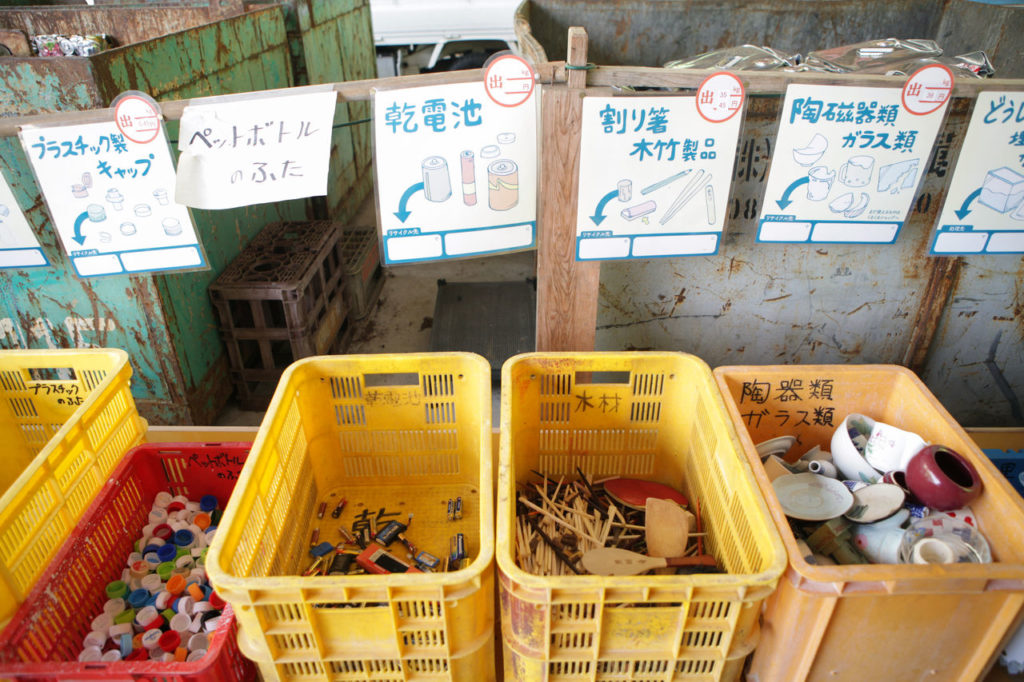
“ต้องขอบคุณความพยายามที่เพิ่มขึ้นของทุกคน ทำให้เราได้รับอัตราการรีไซเคิลถึง 81 เปอร์เซ็นต์”
Sakano Akira เล่าถึงสถิติที่ตีพิมพ์ในการสำรวจทั่วไปของกระทรวงสิ่งแวดล้อมประจำปี 2016 ว่าด้วยเรื่องสถานะของขยะ นอกจากนี้การขายขยะอย่างกระดาษและเหล็ก สามารถทำเงินได้ถึง 2.5 ล้านเยน–3.0 ล้านเยนต่อปี ซึ่งช่วยชดเชยค่าใช้จ่ายในการกำจัดขยะของหมู่บ้าน Kamikatsu ได้อย่างดีเลย ยิ่งใช้ความระมัดระวังในการคัดแยกทรัพยากรมากเท่าใด ราคาขายของวัสดุดังกล่าวในตลาดก็จะยิ่งสูงขึ้น
“พวกเราพยายามจะให้ความสนใจมากขึ้นเท่านั้น แต่กลายเป็นว่ามันเปลี่ยนวิถีชีวิตของเราไปอย่างชิ้นเชิง”
ในปี 2016 กว่า 81% ของขยะในเมืองถูกนำมารีไซเคิล ใช้ใหม่ หรือนำมาทำเป็นปุ๋ย หมู่บ้าน Kamikatsu ตั้งเป้าหมายว่าพวกเขาจะต้องกำจัดขยะให้ได้โดยไม่ใช่เตาเผาหรือการฝังกลบอีกต่อไป และพวกเขาก็กลายเป็นหมู่บ้านแรกในญี่ปุ่นที่ดำเนินการนโยบายขยะเหลือศูนย์อย่างจริงจัง โดยในอนาคตอันใกล้นี้ หมู่บ้าน Kamikatsu หวังว่าจะประสบความสำเร็จในการทำให้ขยะเหลือศูนย์ได้ในที่สุด
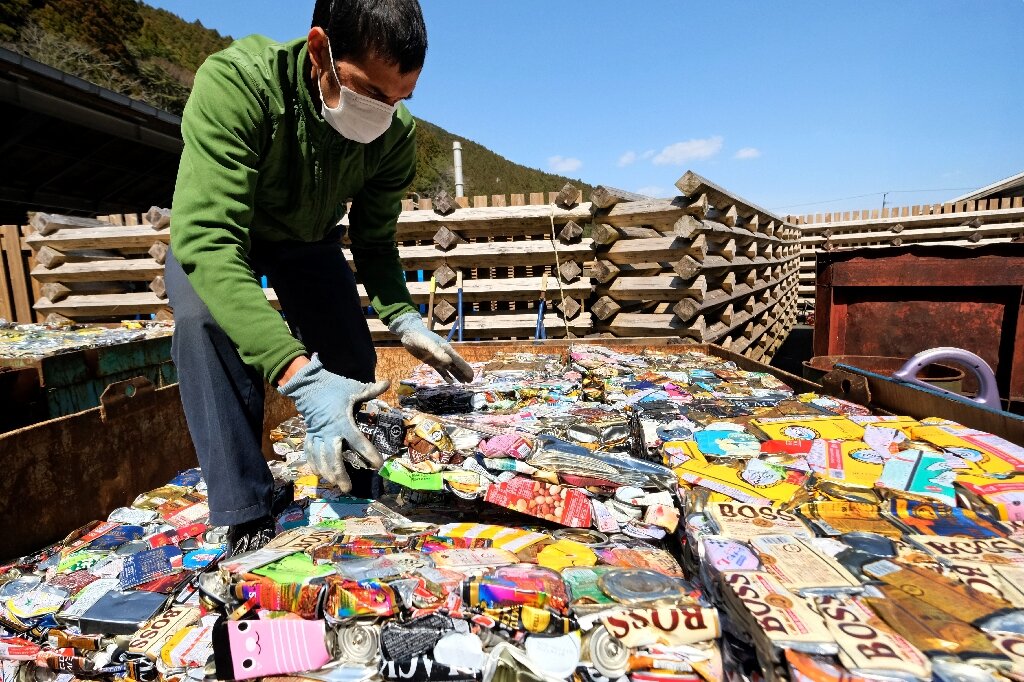
“Kamikatsu Zero Waste Town หมู่บ้านต้นแบบของการเป็น Zero Waste”
การเปลี่ยนแปลงและความสำเร็จของหมู่บ้าน Kamikatsu ทำให้เมืองต่างๆทั่วโลกพยายามเดินตามรอยเท้าพวกเขาด้วยการลดปริมาณขยะตามวิธีของคนในหมู่บ้าน ตัวอย่างเช่น ในปี 2015 ซานดิเอโกประกาศแผนการลดขยะของพวกเขาโดยจะกำจัดขยะออกไปให้ได้ 75% ภายในปี 2030 และกลายเป็นเมืองที่ขยะเหลือศูนย์ภายในปี 2040 นิวยอร์กเองก็มีแผนที่คล้ายกัน พวกเขาหวังว่าจะเป็นเมืองที่ขยะเหลือศูนย์ให้ได้ภายใน 15 ปี เป็นต้น
บทสรุป
ขยะเป็นสิ่งที่ทุกคนสร้างขึ้นและยากที่จะปฏิเสธว่ามันไม่ใช่ของเรา ในเมื่อเรายังกินอาหาร เรายังสวมใส่เสื้อผ้า เรานั่งบนเก้าอี้ หรือนอนบนเตียง อย่างในตอนนี้ทั่วโลกมีอัตราการผลิตขยะเพิ่มสูงขึ้นเร็วกว่าความเจริญก้าวหน้าเสียอีก จากรายงานของ World Bank มีการคาดคะเนว่าภายในปี 2025 จำนวนประชากรทั่วโลกจะผลิตขยะที่มีน้ำหนักประมาณ 3 ปอนด์ต่อวัน ซึ่งวันนี้เอาแค่บ้านเราก็เห็นแล้วว่าปริมาณขยะนั้นสูงขึ้นจริงๆ
ดังนั้นเราอาจจะหลีกเลี่ยงการสร้างขยะไม่ได้ แต่เราสามารถลดปริมาณได้ และเราก็สามารถเลือกได้ว่าขยะของเรา เราจะโยนมันไปทางไหน เพื่อแค่เริ่มจากการตระหนักถึงผลกระทบที่เกิดขึ้นจากการสร้างขยะจำนวนมากและถูกจัดการอย่างไร้ความรับผิดชอบ เราเองก็สามารถเริ่มได้ เริ่มเรียนรู้การจัดการอย่างถูกวิธี เริ่มลงมือทำ เริ่มให้ความรู้คนอื่น เริ่มบอกต่อ เพียงเท่านี้ เราก็สร้างความเปลี่ยนแปลงเหมือนที่หมู่บ้าน Kamikatsu ทำได้แล้ว
“เราเลือกที่จะเปลี่ยนแปลงโลกใบนี้ได้ โดยเริ่มต้นง่ายๆ จากขยะในมือของเราเอง”
Japan’s Town With No Waste | Kamikatsu
Source:
The Kamikatsu Zero Waste Campaign: How a Little Town Achieved a Top Recycling Rate
The simple way this Japanese town has become nearly zero-waste
Kamikatsu: Japan’s Zero-Waste Town







